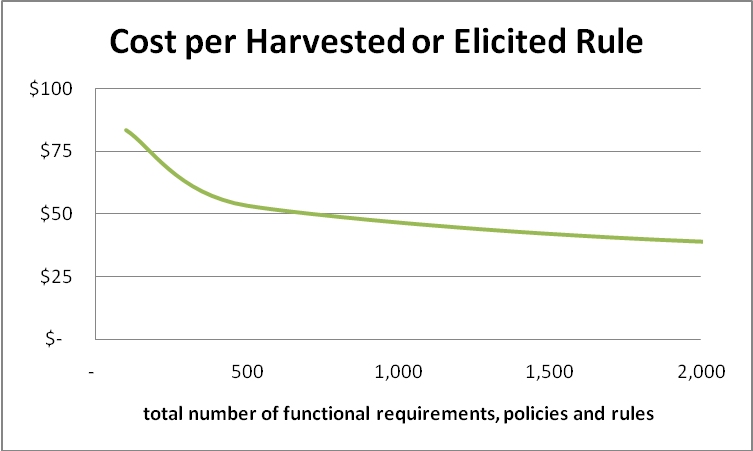Work on acquiring knowledge about science has estimated the cost of encoding knowledge in question answering or problem solving systems at $10,000 per page of relevant textbooks. Regrettably, such estimates are also consistent with the commercial experience of many business rules adopters. The cost of capturing and automating hundreds or thousands of business rules is typically several hundred dollars per rule. The labor costs alone for a implementing several hundred rules too often exceed $100,000.
The fact that most rule adopters face costs exceeding $200 per rule is even more discouraging when this cost does not include the cost of eliciting or harvesting functional requirements or policies but is just the cost of translating such content into the more technical expressions understood by business rules management systems (BRMS) or business rule engines (BRE).
I recommend against adopting any business rule approach that cannot limit the cost of automating elicited or harvested content to less than $100 per rule given a few hundred rules. In fact, Automata provides fixed price services consistent with the following graph using an approach similar to the one I developed at Haley Systems.

